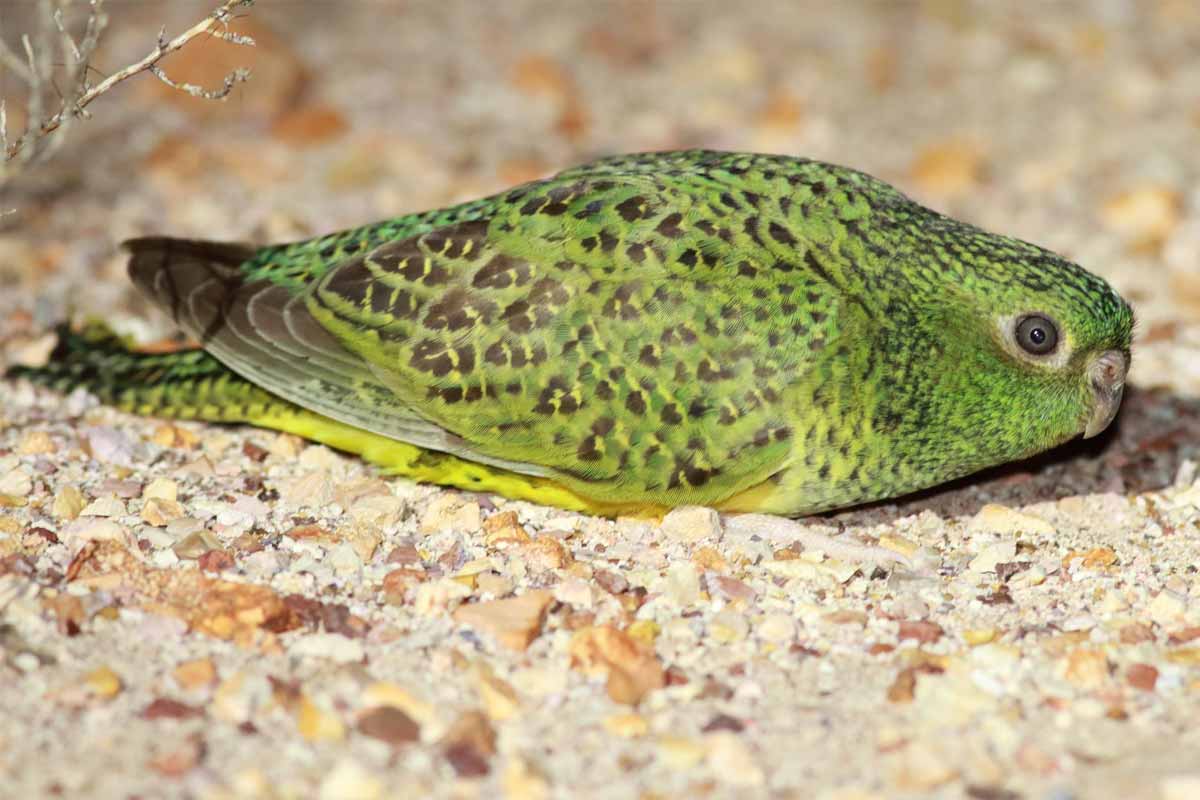Silence can hide wonders, and this one hid in plain sight. After a century of doubt, evidence now points to a living lineage. It moves at night and vanishes by day into desert grass. Rangers and scientists focused, listened, and mapped until the sign was clear. The shy bird persists. They asked practical questions and chased patterns rather than luck. They framed a plan that turns knowledge into protection, so action stays grounded in place and timing.
A century of silence, then proof in the sand
Elusive by habit, the night parrot moves under darkness, then lies low through the heat. By day, it disappears inside thick grass across Australia’s interior. On Ngururrpa Country, that secrecy complicated protection. You cannot guard what you cannot find, and chance sightings rarely surface when a creature prefers shadows.
The team began with three clear questions. Where the parrots live, what threatens them there, and what people can do now to keep them alive. Clarity mattered because ambition without direction wastes time. Methods aligned with country and culture. Fieldwork respected tracks, seasons, and rangers’ long memory. Simple goals kept everyone aligned.
Rather than wait, they paired deep local knowledge with tools that work while people sleep. The aim was simple and direct. Sketch daily needs, chart pressures, then act. With that plan, the bird stopped being a rumor. Information replaced guesswork, and a path opened toward real protection across tough, sandy ground. The habit keeps tracks faint and scattered.
How sound turned a shy bird into a map
From 2020 to 2023, Indigenous rangers and scientists set rugged, weatherproof audio recorders at dozens of sites. Distinct calls became pins on a map, because every detection marked presence at a place and time. Detections spread across a wide belt of desert. That pattern hinted at a resident population. Recorders ran through all weather and long nights.
When recordings confirmed activity, camera traps followed to see which predators checked the same ground. Rangers collected predator scat to identify recent meals. Analysts added decades of satellite imagery to track how often fires rolled through. Ecologist Nick Leseberg helped interpret the soundscape the devices captured and compared signatures between nights. They built a timeline for fire and for predators.
One call rings like a telephone: “didly dip, didly dip.” Another sounds like a bell: “dink dink.” Even without a glimpse, the bird revealed itself by voice. The dots on the map gained credibility. Voiceprints turned silence into proof.
Shelter that grows slowly, protection that cannot rush
Monitors heard night parrots at more than half of the surveyed sites, across far-flung desert country. That spread suggested residents, not strays passing through. Follow-up work located daytime roosts inside dense, older clumps of spinifex. In this region, the key plant is bull spinifex, Triodia longiceps, which forms tight, dome-shaped shelters.
Those domes keep heat out and eyes away, while younger, sparse spinifex fails at both. They depend on mature, tightly packed clumps that need years to form and harden. When a stand burns too often, cover resets to an early stage. Shelter quality collapses and roosts face heat, wind, and passing predators.
Because roosts sit on the ground, exposure turns risky fast. Old grass gives shade, structure, and escape paths. It cannot be rushed, even with the best intentions. Lose that age, and there is no quick substitute. The bird needs time in the landscape and space to recover.
Fire, predators, and the arithmetic of survival for a bird
Lightning and long, dry spells prime the Great Sandy Desert for fast-moving fires. When blazes return on a cycle of only several years, older spinifex never reaches protective form. The study found country around roosts burns too quickly in plant terms. That rhythm traps habitat in youth.
There is a workable fix. Cooler, well-planned burns at the right moments create a mosaic of fuel breaks. The team and local rangers support that approach. That patchwork lowers the odds that a high-intensity wildfire sweeps sandplains and scrubs away roosting cover. It also protects corridors between feeding and sheltering sites.
Predator checks told another story. Cameras saw dingoes near roosts, yet scat held many cat remains. Feral cats stalk at night and can empty nests of fledglings. Dingoes suppress cats through pressure, fear, or direct kills. Keep that balance, and the bird gains room to grow. Fewer cats near roosts mean more chicks getting through.
Why careful choices now decide what still sings after dark
This collaboration showed how methods, land, and community fit together. The night parrot needs old, dense spinifex and a forgiving fire rhythm. It also needs a predator mix where cats do not dominate. With cooler burns, gentle country, respect for dingoes, and steady watchfulness, Ngururrpa can give this shy bird a lasting chance. New tools refine counts and maps so action remains timely, humane, and effective. Success here would echo across deserts that still hold secrets.
